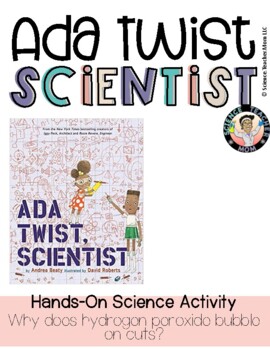Ada Twist, Scientist Hands On Activities: Storytime Science
- PDF
- Easel Activity
What educators are saying
Description
Ada Twist is a curious young girl who loves asking questions and loves science!
Bring your students on a journey of going through a scientific experiment as Ada learns why her cut bubbles when she adds hydrogen peroxide.
This activity is great for Back to School science to get your students excited about science and curious about the world around them. Students will embrace literacy and science all at once while doing the elephant toothpaste experiment as Ada Twist the scientist would.
Did you know you can receive TPT credits for leaving feedback? How it Works:
Earn TpT Credits for purchases on TpT. You get one TpT Credit for every $ you spend on TpT. Thing is, you only get the Credits after you Provide Feedback -- both a fair rating and a fair comment -- on the items that you purchase. We will round up for you, too! If you provide fair feedback on a $4.75 item, you will earn 5 credits. Every 100 Credits is worth $5 that you can apply towards future TpT purchases, but there is no need to wait until you have 100 to redeem them. 50 credits is worth $2.50, for example.






